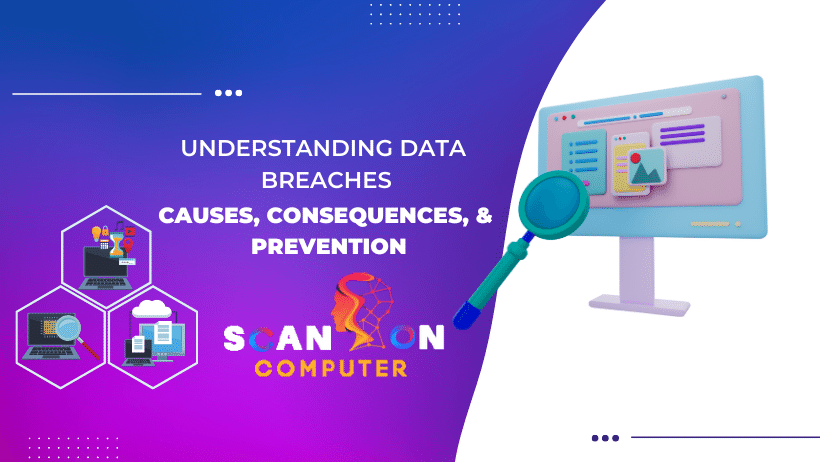Data breaches occur when confidential or sensitive data is exposed due to unlawful acts or malicious intent, and may result in the exposure of confidential or personal information.
Companies should immediately notify consumers impacted by a data breach and work with forensic experts to assess and mitigate it as soon as possible. They must then take any necessary remedial actions.
What is a Data Breach?
Data breaches occur when sensitive information, such as personal or financial details, trade secrets or intellectual property is exposed to unintended recipients without their knowledge or consent. They can occur either intentionally – like theft of credit card numbers – or unintentionally due to human error or system glitches.
Data breaches can be costly to recover from and damage a company’s reputation and lead to lost business opportunities. For example, when individuals discover their personal information has been exposed they may stop doing business with the affected entity altogether.
Physical thefts account for many data breaches. This occurs when documents, laptops, PCs, tablets, USB drives or other movable storage devices are lost or stolen and their data retrieved by criminals to commit identity theft and access financial assets such as bank accounts. Preventive measures such as locking files and folders up and creating password policies must also be put in place in order to mitigate such events.
8 Biggest Data Breaches
Everyday brings news of yet another major data breach. Cybercriminals use stolen logins, email addresses and passwords to gain entry to corporate or individual accounts and steal personal information.
At times of significant data breaches, millions or even billions of sensitive records can be compromised; this includes credit card numbers, personal health information and financial details among many others.
Accidental data breaches often take the form of human error; for example, when an employee accesses files or databases without permission and views data without being authorized is considered a data breach. At other times, malicious insiders (like Edward Snowden) release confidential information which could be used for spying purposes or other nefarious endeavors.
The 8 largest data breaches ever revealed illustrate just how damaging cyber attacks can be, causing financial losses and harming brand reputations while also providing hackers with personal information they could use to commit crimes like identity theft.
As part of good cybersecurity hygiene practices, it’s crucial that data “at rest” and in transit be encrypted – this will reduce the impact of data breaches significantly.
1. Yahoo
Yahoo experienced one of the largest data breaches ever when hackers broke into its servers between 2013 and 2014. News spread slowly at first; when it did, over 3 billion accounts were affected by hacker-led breaches granting access to passwords, email addresses and security questions/answers as well as being able to download an entire user database.
Even though credit card and Social Security numbers weren’t compromised, the incident still caused severe disruption for the company which is now owned by Verizon. As a result of it all, numerous class action lawsuits were filed by affected users, as well as settlement payments being issued out to all affected individuals. It proved a devastating setback to its operations.
Deep Root Analytics, a marketing firm that assists political campaigns target potential voters, made headlines last month by accidentally exposing the personal data of over 198 million American citizens by storing it on an open server – this included names, emails, addresses and phone numbers but also political affiliations and advanced sentiment analysis of issues – leaving these citizens susceptible to identity theft as well as various scams.
2. Marriott Hotels
Marriott Hotels experienced its worst data breach ever in 2018 as hackers gained access to 500 million records held by Starwood Hotel Brands – which had been purchased by them back in 2016. Hackers gained access to full names, passport numbers, phone numbers, mailing addresses and email addresses of each guest at each hotel chain owned by Starwood.
This breach occurred in 2014 and went undetected for four years, underscoring the importance of including CISOs in M&A planning to ensure that any new business’s IT systems are up to date and secure.
Facebook experienced its second largest data breach ever in 2021 when hackers breached third-party media companies Cultura Colectiva and At the Pool. Hackers gained access to comments, likes, reactions and account names stored on these websites as well as private messages belonging to 540 million Facebook users; it happened due to misconfigured databases being publicly accessible online; best practices should have been employed when it came to internal security and zero trust architecture, making it harder for attackers to gain unwarranted access.
3. Twitter
Twitter has long been vulnerable to hacks, with their most recent one ranking amongst the largest ever data breaches ever. A hacker posted on BreachForums late 2021 with details regarding stolen email and phone numbers for approximately 5.4 million Twitter users that were available for sale for upwards of $30,000.
Hackers apparently accessed this data by exploiting an API vulnerability, which allowed them to search email addresses linked with Twitter profiles and link them together into a database, providing attackers with a tool for doxxing Twitter users or even uncovering pseudonymous accounts.
BleepingComputer reports that Twitter database was later discovered for sale on an underground marketplace for as little as $2 per record, prompting Twitter to notify impacted users that they should change their passwords as a precautionary measure.
The breach comes at an inconvenient time for Elon Musk’s recent purchase of the company, just weeks before economic turmoil makes business cuts more vulnerable to cyber attacks and leaves themselves open to attack.
4. eBay
In 2014, online auction site eBay suffered a data breach which compromised the personal information of 145 million users. Hackers gained access to usernames, encrypted passwords, email addresses, physical addresses and phone numbers; however, no social security numbers were accessed or stolen by hackers. As a precautionary measure, eBay requested all customers change their passwords as soon as possible.
Heartland Payment Systems was compromised in 2008, leading to millions of credit card holders becoming victims of data theft. Hackers gained entry to Heartland Payment’s point-of-sale system, gaining access to payment card details. Heartland eventually settled with credit card companies by paying $110 million as settlement fees for claims related to Heartland Payment.
Yum Brands–the parent company of fast food restaurants like KFC, Taco Bell and Pizza Hut–was hit with a major cyber attack during the first quarter of 2023. Hackers gained access to sensitive employee emails, cell phone numbers and salaries that hackers stole. Due to this event, extra security measures had to be added as well as notifying employees and providing reimbursement to affected customers; furthermore it damaged Yum’s image and reputation significantly.
5. Heartland Payment Systems
Heartland Payment Systems experienced what was then considered to be one of the largest data breaches ever, when hackers breached their database and stole 130 million credit and debit card records that were then used fraudulently. Subsequently, Judicial Panel on Multidistrict Litigation consolidated multiple lawsuits related to this breach from financial institutions as well as consumers who used these cards at stores like Michaels and Neiman Marcus.
Security breaches like this underscore the necessity of companies implementing internal security protocols that go beyond regulatory compliance frameworks, in order to detect threats that bypass outer-level defenses. Heartland was not using full-disk encryption on desktops at its Santa Ana, Calif. headquarters which could have prevented this hack.
This hack emphasizes the necessity of conducting regular vulnerability assessments to detect and patch any flaws in your cybersecurity systems. Such assessments should detect both human and machine vulnerabilities, and feature various forms of protection such as passwords or end-to-end encryption.
6. LinkedIn
In 2012, hackers breached LinkedIn and stole 167 million user records without being discovered until 2016. As soon as LinkedIn discovered this breach in 2016, all affected users had to change their passwords immediately.
Neiman Marcus issued notice to its 4.6 million customers that their online accounts had been compromised in May 2020 by hackers who gained access to usernames and passwords, names, addresses, emails addresses, job titles, gender information and professional details.
This breach also compromised numerous of the company’s credit card accounts linked to PayPal, prompting them to change all affected passwords and implement two-step authentication, which requires receiving an SMS verification code before authorizing logins.
MySpace experienced its largest dating and social media hack ever in 2015-2016 when hackers broke into 412 million account records resulting from poor security practices and unprotected user passwords, respectively. Additionally, hackers gained access to point-of-sale system records which exposed PIN numbers and names belonging to account holders.
7. MySpace
Last week, MySpace — now defunct social media giant — became the latest company to fall prey to a data breach. MySpace revealed that a hacker known only as Peace was offering to sell usernames and passwords stolen prior to 2013, when MySpace implemented new security measures.
Although this breach may seem minor, it’s worth keeping in mind that most people use the same password across multiple online accounts – something hackers armed with MySpace logins could exploit to access other services and websites, potentially stealing sensitive data such as credit card details or even your location.
Other breaches this year have affected Twitter, with its warning to 330 million users to change their passwords in 2020, and Capital One who exposed their customers’ personal data through hacks in 2019. Quora (owned by Elon Musk), an extremely popular question-and-answer platform was subjected to two breaches between 2018-2021; First American Financial Corp’s poorly designed website allowed sensitive information to be easily viewed by anyone with the link provided to view it.
8. FriendFinder Network
Leaked Source reported in November a data breach from adult dating website FriendFinder Networks which compromised 412 million accounts containing usernames, e-mail addresses and passwords – considered one of the largest data breaches ever.
The breach occurred due to a Local File Inclusion vulnerability. This allows hackers to provide input that allows web server code execution, according to Open Web Application Security Project (OWASP).
FriendFinder Networks was breached in May 2015, exposing sensitive user data such as sexual preferences and whether people were looking for affairs. That breach should have served as a wake-up call for the company, encouraging it to improve its cybersecurity hygiene and put safeguards into place to better safeguard data.
Most data breaches that lead to devastating data losses could have been avoided through simple measures, like patching vulnerabilities and creating strong password policies. Cybercriminals are notoriously relentless when it comes to exploiting companies that ignore basic cybersecurity practices – thus it is imperative that businesses establish an extensive and effective cyber risk management program.
Causes of Data Breaches
Daily headlines highlight yet another company for experiencing a data breach that places its customers at risk. Such breaches could be the result of intentional attacks, employee negligence or structural flaws within an organization’s infrastructure – anything can cause them.
Cyber hackers exploit computer systems in order to obtain personal information such as credit card numbers, Social Security numbers and health records, or intellectual property such as customer lists and source code from corporations. They employ various techniques – from embedding malware onto websites to sending emails containing spam in an attempt to gain entry.
An accidental insider view occurs when an employee gain unauthorised access to a computer and unintentionally view sensitive files. It could involve saving files to an insecure location or even accidentally publishing servers online.
Lack of proper cybersecurity measures is one of the leading causes of data breaches. This includes poorly written software applications or network systems without proper firewalls and encryption measures in place.
Types of Cyber Security Threats
Data breaches occur when sensitive, protected or confidential information is inappropriately copied, transmitted, viewed, stolen or used without authorization by someone unwary to do so. Such cyber attacks may take various forms – accidental disclosure, unapproved access and even malicious hacking can constitute data breaches.
Attackers steal data for various reasons, from harassment and extortion to financial gain or cyber espionage. Personal identifying information (PII), company trade secrets, financial details and social security numbers are often targeted by hackers.
Hackers exist worldwide. From novice “script kiddies” using easily accessible threat toolkits, to advanced operators who have the expertise necessary to develop innovative attacks that bypass organizational defenses.
Data breaches can also be caused by employees and trusted external partners. A lack of two-factor authentication, weak passwords and failing to revoke access for departing staff members can open systems up for attack. Furthermore, businesses often rely on third-party software and hardware which may contain vulnerabilities which attackers can take advantage of; such attacks are known as supply chain threats.
What Is Data Protection?
Data protection is an integral component of cybersecurity that ensures private information remains accessible at all times to its intended users.
Cybercriminals often swipe personal data for sale or use in illegal activities, including names, emails addresses, passwords, credit card numbers and other personal details.
Malware infections provide hackers with easy access to sensitive information stored online. Hackers use malware programs like this one to find vulnerabilities in your security and gain entry, then steal credentials and passwords that give criminals direct access to all the data stored there.
Once a data breach occurs, immediate steps should be taken to limit additional damage. This includes notifying those impacted and searching the web for improperly posted information as soon as possible – along with contacting websites which have accidentally saved your information in error so they may delete it – before complying with industry or country-specific regulations regarding data breaches.
Data Protection Technologies and Practices
Data Protection refers to using technologies and practices to safeguard critical business data against any circumstances, as well as tools and processes to detect breaches in security or prevent unwarranted access.
Data security threats exist both internally and externally for systems. Internal risks include errors in IT configuration or security policies, unrestricted access to storage services or devices and malicious insiders; while external risks include phishing attacks, malware distribution and attacks against corporate infrastructure like SQL injection or DDoS attacks.
Maintaining data security requires constant surveillance for potentially risky employee behavior from current and departing employees. With today’s rapidly shifting workforce, more emphasis has been placed on mitigating data loss by equipping security teams with systems to detect and alert on anomalous activities without hindering productivity. IRM solutions like Code42’s IRM have become increasingly popular; its combination of user behavior analytics and machine learning to establish baselines of normal activity followed by monitoring and alerting on out-of-the-ordinary or potentially risky actions is designed to quickly detect and respond to pressing events quickly allowing security teams to quickly identify and respond swiftly when necessary.
What Is Data Backup?
Data backup is the practice of copying files and storing them securely for future restoration in case of disaster, making it one of the key elements of business continuity and disaster recovery strategies.
Every person and business should establish an effective backup and recovery system, including safeguarding key documents like financial info, customer records, project files, etc. that would be hard to replace if lost or destroyed.
An effective data backup and recovery strategy involves employing both full and incremental backups, with full being a comprehensive copy of all data stored on a device and used for recovering corrupt or deleted files, while incrementals only store any changes since the last full backup, saving both time and storage space.
Companies should employ redundancy strategies that address multiple forms of failures, such as having multiple backup devices onsite and offsite or replicating data via RAID (Redundant Array of Independent Disks). Multiple copies can help ensure even catastrophic data losses won’t lead to disaster.
What is Disaster Recovery?
Disaster recovery entails the processes necessary for an organization to restore their data following a catastrophe or power outage, like NYC Blackout. Testing on both file restores and full recoveries should take place regularly to ensure their effectiveness under real world scenarios like malware infection or power loss, such as when electricity goes out due to blackout.
IT disaster recovery strategies typically call for IT teams to halt normal operations and implement backup copies from either an independent data center or the cloud, though this approach can be expensive because of duplicating hardware and software licenses – businesses should carefully consider their downtime costs before investing in this strategy.
No matter the approach taken, an effective disaster recovery plan must include a communication strategy. This should outlines the most efficient means of notifying consumers, vendors, and others affected by a breach, while outlining an forensics team to capture forensic images from compromised systems and analyze breaches.














Leave a Reply
View Comments